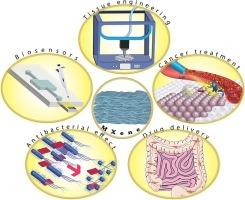Mxenes as a versatile nanoplatform: Synthesis and emerging biomedical applications
IF 5.9
3区 工程技术
Q1 CHEMISTRY, MULTIDISCIPLINARY
Journal of Industrial and Engineering Chemistry
Pub Date : 2025-02-16
DOI:10.1016/j.jiec.2025.02.020
引用次数: 0
Abstract
Recently, MXenes have garnered significant attention in academic research due to their remarkable structural, electrical, magnetic, optical, mechanical, and chemical properties. New advancements and emerging findings indicate that MXene, classified as a two-dimensional (2D) layered material, exhibits significantly more potential in the field of biomedicine and biotechnology compared to existing nanosystems. These applications include acting as antibacterial agents, biosensor systems, the delivery and loading of drugs, bioimaging, and therapeutic interventions. The unique characteristics of MXenes, such as their significant electrical conductivity, large surface area, low toxicity, magnetism, luminescence, and high biocompatibility, make them highly promising candidates for diagnostic, therapeutic, and theranostic applications. Surface modifications of MXenes exhibit biocompatibility and have multifunctional functions, including the ability to direct ligands towards specific spots for preferential aggregation, hence enabling their utilization in specialized applications. This paper provides an overview of the characteristics, modifications, and synthesis methods of MXene nanomaterials. The present article also delivers a comprehensive assessment of the practical uses of MXene-based nanomaterials in biomedicine, with a particular focus on biosensing, bioimaging, antibacterial effects, implants, and multifunctional therapeutic platforms. This paper also presents a discussion of the future prospects and challenges associated with the applications of MXenes in the biomedicine field.

Mxenes作为多功能纳米平台:合成和新兴生物医学应用
近年来,MXenes因其卓越的结构、电学、磁学、光学、机械和化学性能在学术研究中引起了极大的关注。新的进展和新发现表明,与现有的纳米系统相比,MXene作为一种二维(2D)层状材料,在生物医学和生物技术领域显示出更大的潜力。这些应用包括作为抗菌剂、生物传感器系统、药物递送和装载、生物成像和治疗干预。MXenes的独特特性,如其显著的导电性、大表面积、低毒性、磁性、发光和高生物相容性,使其在诊断、治疗和治疗应用方面具有很高的前景。MXenes的表面修饰具有生物相容性和多功能,包括将配体定向到特定位点进行优先聚集的能力,从而使其能够在特定应用中得到利用。本文综述了MXene纳米材料的特点、改性及合成方法。本文还全面评估了基于mxene的纳米材料在生物医学中的实际应用,特别关注生物传感、生物成像、抗菌作用、植入物和多功能治疗平台。本文还讨论了MXenes在生物医学领域应用的未来前景和挑战。
本文章由计算机程序翻译,如有差异,请以英文原文为准。
求助全文
约1分钟内获得全文
求助全文
来源期刊
CiteScore
10.40
自引率
6.60%
发文量
639
审稿时长
29 days
期刊介绍:
Journal of Industrial and Engineering Chemistry is published monthly in English by the Korean Society of Industrial and Engineering Chemistry. JIEC brings together multidisciplinary interests in one journal and is to disseminate information on all aspects of research and development in industrial and engineering chemistry. Contributions in the form of research articles, short communications, notes and reviews are considered for publication. The editors welcome original contributions that have not been and are not to be published elsewhere. Instruction to authors and a manuscript submissions form are printed at the end of each issue. Bulk reprints of individual articles can be ordered. This publication is partially supported by Korea Research Foundation and the Korean Federation of Science and Technology Societies.

 求助内容:
求助内容: 应助结果提醒方式:
应助结果提醒方式:


